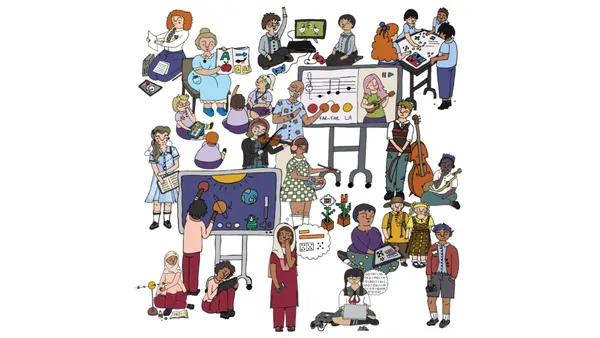Dive Brief:
- The Board of Trustees for UFT Charter School in Brooklyn's East New York neighborhood voted last week to give up its charter and become a traditional public school, according to a press release.
- UFT President Michael Mulgrew said students, parents and teachers told the board they wanted to be part of the broader public school community, and educators say students will have better access to Advanced Placement, technology, math and dual-language courses, as well as sports programs.
- The union-run school, operated by the United Federation of Teachers, admits 9th-graders with low proficiency scores, and SUNY cited the school’s successful graduation rates in its most-recent five-year charter renewal report. Results from 2018-19 show a higher graduation rate than both the citywide average and the average for schools with similar demographics. The school has 180 students and 18 staff members.
Dive Insight:
UFT's school was chartered in 2005 and closed its elementary and middle grades in 2015 to focus on high school students. Its success is considered the result of the school identifying students at academic risk early and putting a system in place to ensure their graduation.
The number of charter schools has grown rapidly over the past 15 years. Their popularity is fueled in part by the fact they have a greater level of freedom from rules public schools must follow, giving them more leeway to innovate. As schools of choice, they can be built around specific education models and cultures. They are not unionized and are held accountable to appointed boards and authorizers.
But despite their benefits and recent growth, charter schools are losing favor with segments of the public as well as elected officials, with top presidential candidates like Bernie Sanders and Elizabeth Warren backing away from their support. Charters are also often criticized as operating without public oversight while still receiving a share of resources allocated for public schools.
In Los Angeles, last year's teachers strike resulted in a moratorium on new charter schools. And in Chicago, applications for new charters dropped 50% over a three-year period between 2016 and 2019. No new charter applications were filed in 2019 — a significant change from 2014-15, when 16 schools applied for a new charter in the city. The previous year, the district rejected three new charter proposals. And in 2017, only one of nine proposals was approved.
A report by the Center on Reinventing Public Education at the University of Washington Bothell found that, in Los Angeles and San Diego, half the enrollment losses of public schools were caused by charter schools. In Oakland, the effect of charters was more profound, with 75% of students who left public schools going to a charter.











